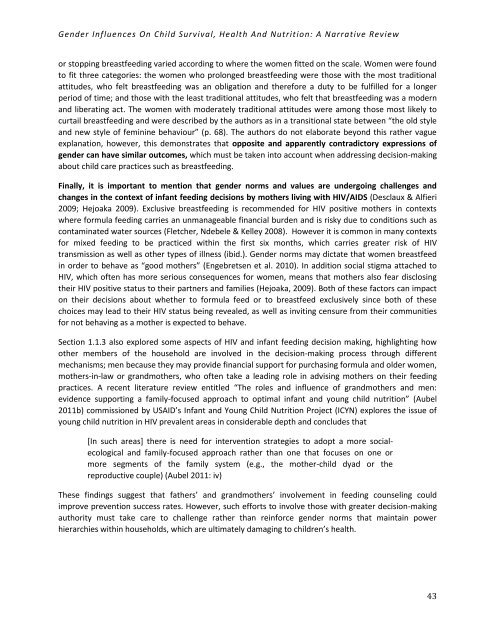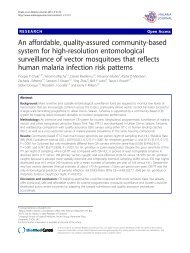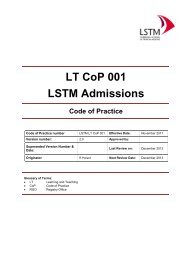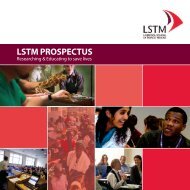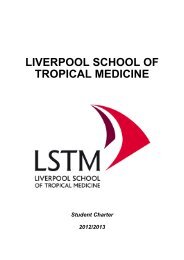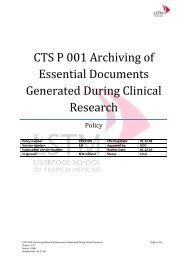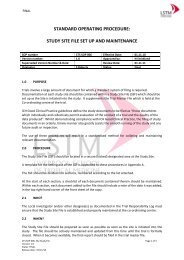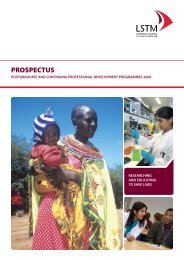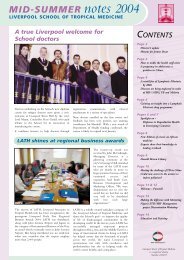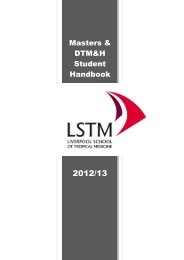Gender influences on child survival, health and nutrition: a ... - Unicef
Gender influences on child survival, health and nutrition: a ... - Unicef
Gender influences on child survival, health and nutrition: a ... - Unicef
You also want an ePaper? Increase the reach of your titles
YUMPU automatically turns print PDFs into web optimized ePapers that Google loves.
<str<strong>on</strong>g>Gender</str<strong>on</strong>g> Influences On Child Survival, Health And Nutriti<strong>on</strong>: A Narrative Review<br />
or stopping breastfeeding varied according to where the women fitted <strong>on</strong> the scale. Women were found<br />
to fit three categories: the women who prol<strong>on</strong>ged breastfeeding were those with the most traditi<strong>on</strong>al<br />
attitudes, who felt breastfeeding was an obligati<strong>on</strong> <strong>and</strong> therefore a duty to be fulfilled for a l<strong>on</strong>ger<br />
period of time; <strong>and</strong> those with the least traditi<strong>on</strong>al attitudes, who felt that breastfeeding was a modern<br />
<strong>and</strong> liberating act. The women with moderately traditi<strong>on</strong>al attitudes were am<strong>on</strong>g those most likely to<br />
curtail breastfeeding <strong>and</strong> were described by the authors as in a transiti<strong>on</strong>al state between “the old style<br />
<strong>and</strong> new style of feminine behaviour” (p. 68). The authors do not elaborate bey<strong>on</strong>d this rather vague<br />
explanati<strong>on</strong>, however, this dem<strong>on</strong>strates that opposite <strong>and</strong> apparently c<strong>on</strong>tradictory expressi<strong>on</strong>s of<br />
gender can have similar outcomes, which must be taken into account when addressing decisi<strong>on</strong>-making<br />
about <strong>child</strong> care practices such as breastfeeding.<br />
Finally, it is important to menti<strong>on</strong> that gender norms <strong>and</strong> values are undergoing challenges <strong>and</strong><br />
changes in the c<strong>on</strong>text of infant feeding decisi<strong>on</strong>s by mothers living with HIV/AIDS (Desclaux & Alfieri<br />
2009; Hejoaka 2009). Exclusive breastfeeding is recommended for HIV positive mothers in c<strong>on</strong>texts<br />
where formula feeding carries an unmanageable financial burden <strong>and</strong> is risky due to c<strong>on</strong>diti<strong>on</strong>s such as<br />
c<strong>on</strong>taminated water sources (Fletcher, Ndebele & Kelley 2008). However it is comm<strong>on</strong> in many c<strong>on</strong>texts<br />
for mixed feeding to be practiced within the first six m<strong>on</strong>ths, which carries greater risk of HIV<br />
transmissi<strong>on</strong> as well as other types of illness (ibid.). <str<strong>on</strong>g>Gender</str<strong>on</strong>g> norms may dictate that women breastfeed<br />
in order to behave as “good mothers” (Engebretsen et al. 2010). In additi<strong>on</strong> social stigma attached to<br />
HIV, which often has more serious c<strong>on</strong>sequences for women, means that mothers also fear disclosing<br />
their HIV positive status to their partners <strong>and</strong> families (Hejoaka, 2009). Both of these factors can impact<br />
<strong>on</strong> their decisi<strong>on</strong>s about whether to formula feed or to breastfeed exclusively since both of these<br />
choices may lead to their HIV status being revealed, as well as inviting censure from their communities<br />
for not behaving as a mother is expected to behave.<br />
Secti<strong>on</strong> 1.1.3 also explored some aspects of HIV <strong>and</strong> infant feeding decisi<strong>on</strong> making, highlighting how<br />
other members of the household are involved in the decisi<strong>on</strong>-making process through different<br />
mechanisms; men because they may provide financial support for purchasing formula <strong>and</strong> older women,<br />
mothers-in-law or gr<strong>and</strong>mothers, who often take a leading role in advising mothers <strong>on</strong> their feeding<br />
practices. A recent literature review entitled “The roles <strong>and</strong> influence of gr<strong>and</strong>mothers <strong>and</strong> men:<br />
evidence supporting a family-focused approach to optimal infant <strong>and</strong> young <strong>child</strong> nutriti<strong>on</strong>” (Aubel<br />
2011b) commissi<strong>on</strong>ed by USAID’s Infant <strong>and</strong> Young Child Nutriti<strong>on</strong> Project (ICYN) explores the issue of<br />
young <strong>child</strong> nutriti<strong>on</strong> in HIV prevalent areas in c<strong>on</strong>siderable depth <strong>and</strong> c<strong>on</strong>cludes that<br />
[In such areas] there is need for interventi<strong>on</strong> strategies to adopt a more socialecological<br />
<strong>and</strong> family-focused approach rather than <strong>on</strong>e that focuses <strong>on</strong> <strong>on</strong>e or<br />
more segments of the family system (e.g., the mother-<strong>child</strong> dyad or the<br />
reproductive couple) (Aubel 2011: iv)<br />
These findings suggest that fathers’ <strong>and</strong> gr<strong>and</strong>mothers’ involvement in feeding counseling could<br />
improve preventi<strong>on</strong> success rates. However, such efforts to involve those with greater decisi<strong>on</strong>-making<br />
authority must take care to challenge rather than reinforce gender norms that maintain power<br />
hierarchies within households, which are ultimately damaging to <strong>child</strong>ren’s <strong>health</strong>.<br />
43


